If you’ve ever grown a spider plant (Chlorophytum comosum) before, you probably understand exactly why this is such a classic houseplant. It’s easy to grow, decorative, pet-safe and pretty much propagates itself. What more could a houseplant enthusiast ask for?
Keep reading for everything you need to know about spider plant care and growing this beginner-proof species in your home!
| Common name(s) | Spider plant, spider ivy, ribbon plant, airplane plant, bracket plant |
| Scientific name | Chlorophytum comosum |
| Family | Asparagaceae |
| Height and spread | Up to 24 inches tall and 18 inches wide |
| Light | Bright indirect light |
| Soil type | Nutrient-rich and well-draining |
| Water | Keep lightly moist |
Disclosure: If you shop from my article or make a purchase through one of my links, I may receive commissions on some of the products I recommend.
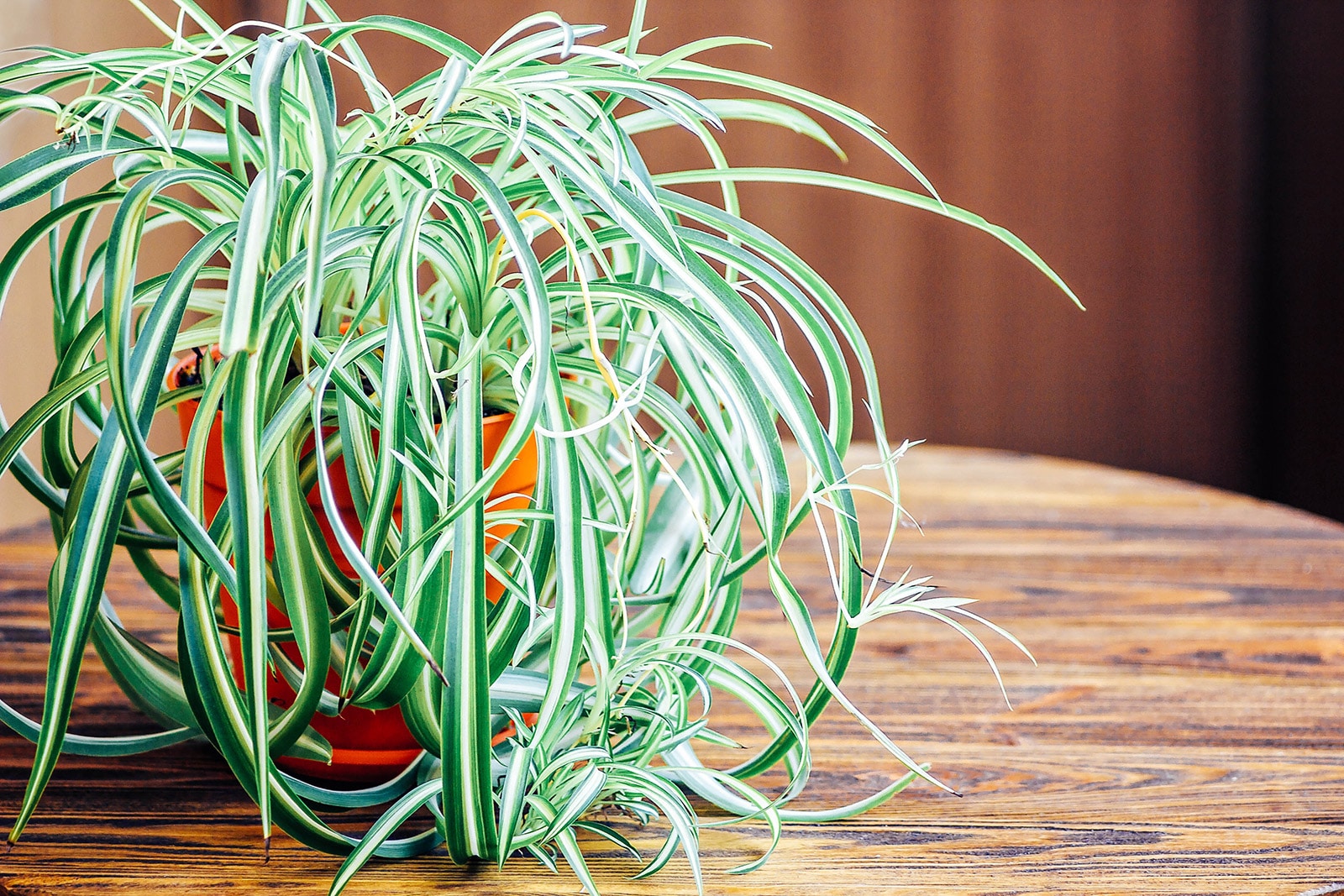
About spider plants
Natural habitat
Chlorophytum comosum is native to the continent of Africa, where it has a very wide range. It can be found in both the western and eastern tropical countries and all the way down to South Africa.
I can’t really tell you much about the specific type of habitat it prefers, because it really doesn’t seem to have much of a preference at all! Low elevations, high elevations, forests, open areas, high temperatures, cool temperatures… This is a plant that even just grows in water, no soil needed! You name it, spider plants grow there.
For this reason, it’s always top of my list for beginners to grow (along with another easy-care houseplant, wandering Jew).
Description
Spider plants (like their distant cousins, the cast iron plants and cylindrical snake plants, which are just as beginner-friendly) are members of the family Asparagaceae, which, yes, is the same family the common garden asparagus falls under.
It looks more like a type of grass, though, especially in its fully green wild form. The species is a perennial evergreen that grows elongated leaves from central rhizomes and often blooms tiny white flowers, even indoors.
One characteristic that makes spider plants very recognizable (and that earned them their common name) is the way they naturally spread. The mother plant produces plantlets dangling on a thin stem, like little spiders in a web! Because both these “spiderettes” and the mother plant’s leaves tend to hang downwards, spider plants are often grown in hanging planters.
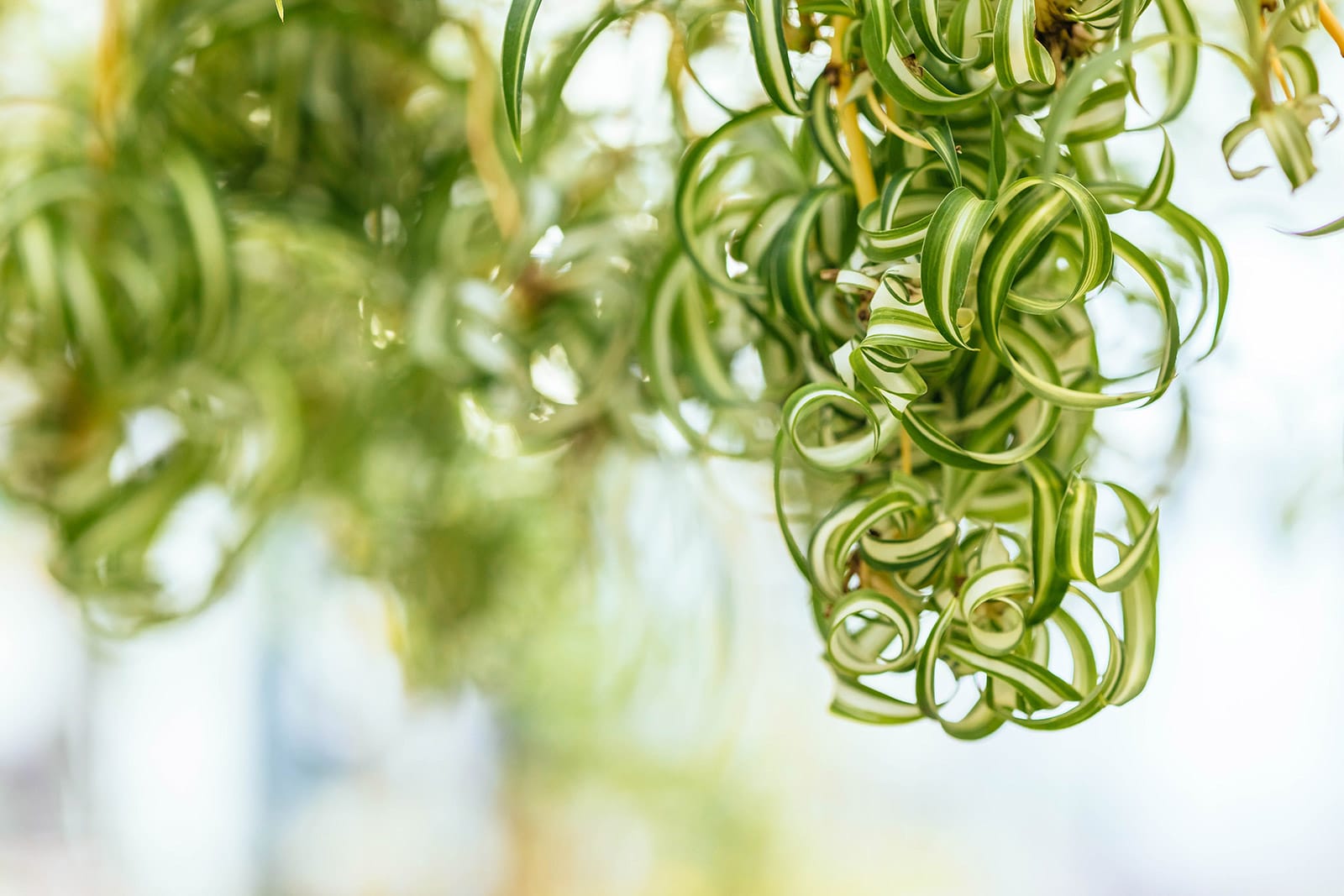
Uses and cultural significance
Of course, the main use of spider plants is as a houseplant. The many variegated cultivars (which I’ll discuss below) are extremely popular. We all know (or are!) someone that has had a spider plant in their home or office at some point.
In the areas where it’s naturally found, this species holds a certain cultural significance. In fact, it’s one of the 11 plant species that fall under the “Isicakathi” for the southern African Xhosa people: plants that are believed to have medicinal properties. It’s mostly associated with mothers and babies, with newborn babies (and children in general) traditionally being administered an infusion of the tuber as a purgative (Bolofo & Johnson, 1980). It’s also used as a general charm for mothers and their newborns to ward off bad luck.
In the Western world, there’s a persistent belief that spider plants (along with a few other common houseplant species) act as a sort of vacuum cleaner for carbon monoxide, formaldehyde, and other things we don’t want to breathe. This mainly has to do with a 1989 NASA study that suggested it has air-cleaning properties.
Unfortunately, as a 2019 National Geographic article explains, the spider plant’s abilities to clean the air are overstated. But hey, even if it doesn’t leave me with cleaner air, I still appreciate it as a houseplant all the same!
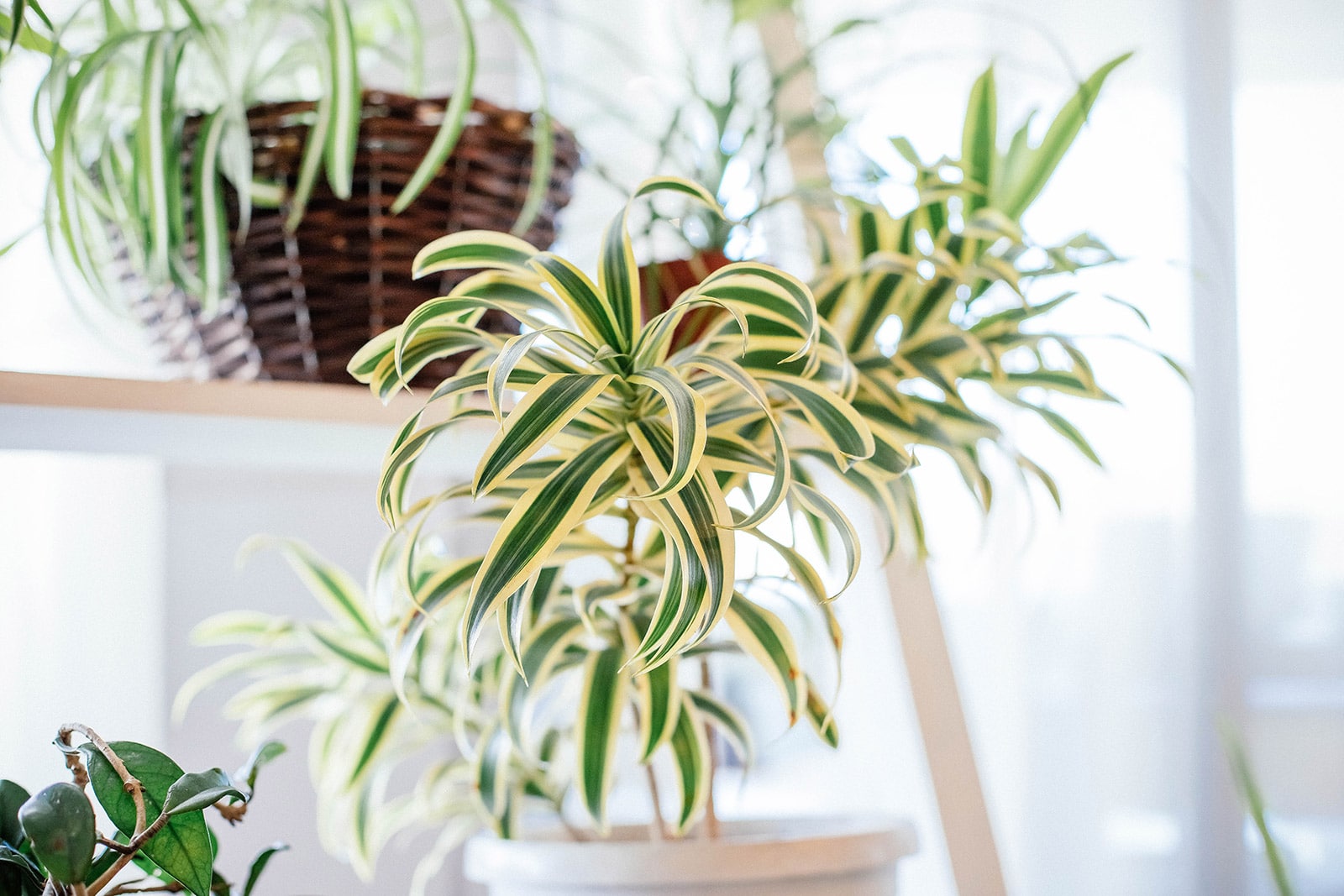
Spider plant varieties
There are quite a few different spider plant varieties out there. Firstly, there are the three subspecies. Not surprising: Chlorophytum comosum grows in such a variety of habitats that there were bound to be different types within the species.
Specifically, we’ve got Chlorophytum comosum comosum, Chlorophytum comosum bipindense, and Chlorophyum comosum sparsiflorum (Poulsen & Nordal, 2005). You’ll only see the first one commonly sold in the houseplant trade; the latter two sport broader leaves.
Although you’ll only find one of the subspecies in your local plant store, that doesn’t mean there’s no variety when it comes to spider plants. Selective breeding has led to a few different cultivars, which are so nice to look at that they’ve pretty much crowded out the plain green wild form.
The most popular spider plant varieties are:
- Chlorophytum comosum ‘Variegatum’: Your average spider plant with striped leaves. Leaves are green on the outside and white on the inside.
- Chlorophytum comosum ‘Reverse Variegatum’: Ss the name suggests, this one has white on the outside of its leaves and green on the inside, rather than the other way around.
- Chlorophytum comosum ‘Bonnie’: Curly variegated foliage.
where to buy
Will the real spider plant please stand up?!
It’s important to keep in mind that a few of Chlorophytum comosum’s cousins are pretty difficult to distinguish from the “real deal” to the untrained eye. Chlorophytum laxum, capense, viridiscens and others may be sold as spider plants, but there are some differences.
Luckily, care for these “impostors” is not very different, so even if you’re not sure what you’ve got on your hands, this care guide will still help you keep it alive and thriving.
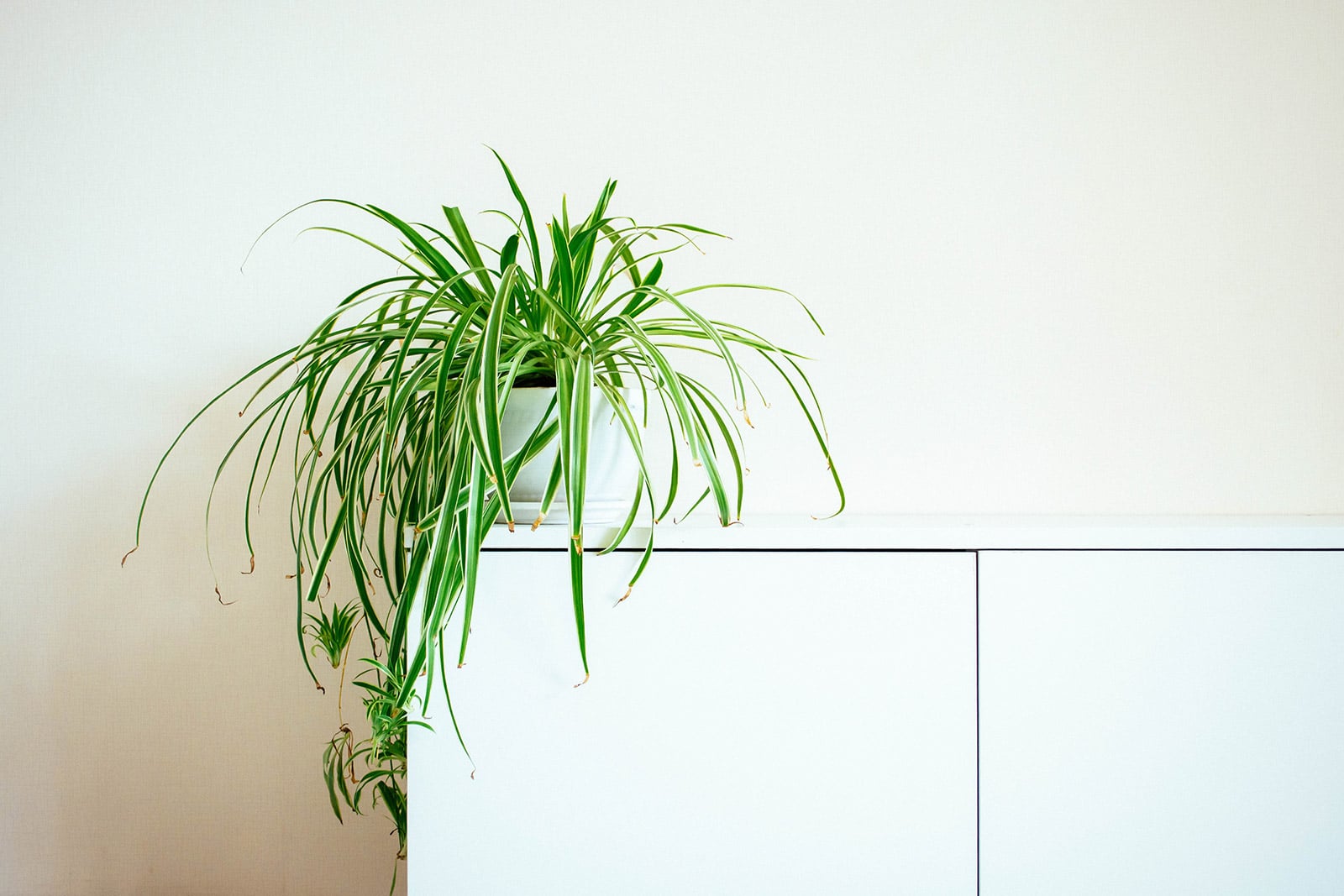
Caring for a spider plant
Light and temperature
As they’re naturally part of the undergrowth in most of their habitats, spider plants appreciate bright but indirect light. They won’t mind some direct sun, but you’d have to acclimate your plant carefully and avoid strong afternoon rays.
Although they’re often touted as very low-light plants that can survive pretty much anywhere, it’s unfortunately not that simple.
All plants need light. This one doesn’t need much, but you can’t keep it in the dark either. It might cling to life for a good while, but it’ll eventually slowly wither.
If you can’t offer a bright spot in the home, you might have to consider artificial lighting to keep your spider plant going.
As for temperature, spider plants are definitely not fussy. Very low temperatures can make them die off and go dormant, which isn’t the prettiest thing to look at. Anything above around 50°F should be fine though.
Water and humidity
Spider plants appreciate lightly moist soil, especially during the summer growing months. Don’t overdo it though, as standing water or a waterlogged medium can cause root rot. They’ve got tuberous roots that can store a bit of moisture, so it’s generally better to underwater than to overdo it.
If you’re not sure whether your spider plant needs a drink yet, pop your finger into the soil or use a moisture meter like this one. If it’s still moist, you can wait another few days. During summer you may need to water your plant every few days, while it can be more than a week between waterings in the colder months.
When it comes to humidity, we’re in luck with this species. It’s really not very fussy about it. Unless the air is very dry, it should grow absolutely fine in the average home.
Did you know?
Chlorophytum comosum appears to be sensitive to fluoride and minerals in tap water. It might be helpful to flush your plant’s soil regularly using distilled water, to prevent a build-up of these compounds from causing brown leaf tips and other damage.
Soil and planting
As long as it drains well, spider plants are not very particular when it comes to soil. Sources will recommend a loamy mix, slightly acidic, nutrient-rich and all sorts of other adjectives, but let me be honest here: mine have always grown absolutely fine in a basic mix of potting soil with a handful of perlite. You could add some peat to hold moisture and provide acidity, along with orchid bark to promote drainage, but it’s not a must if you want to keep it simple.
If your spider plant’s roots are starting to come out of its planter’s drainage hole or the soil is beginning to dry out too quickly, it’s probably time for a repot. This is usually once every one to two years.
Most houseplant enthusiasts prefer to grow their spider plants in hanging planters or at least allow them to trail down. This is mainly because as your plant matures, it’ll start producing hanging pups, which look great if they’re allowed to dangle. Whatever container you go for, just make sure it has a drainage hole in the bottom.
Recommended products for spider plant care:
- FoxFarm Ocean Forest Potting Soil
- Better-Gro Special Orchid Potting Mix
- Perfect Plants Organic Perlite

Fertilizing
If your spider plant is healthy and growing well, you can use a general, balanced liquid houseplant fertilizer to give it a boost during the growing season. Apply once a month or so while you water.
Stop fertilizing during winter or if your plant isn’t growing well, or you risk damaging its roots.
Recommended fertilizers for spider plants:
- Houseplant Resource Center Liquid Fertilizer for Houseplants
- Instant Biologics Instant Plant Food (Fizzing Nutrient Tablets)
- Maxsea All-Purpose Seaweed Plant Food
Pruning
You usually won’t need to prune a spider plant. The exception would be if you’re dealing with brown leaf tips; they’re a bit unsightly, so you can cut off the affected parts if they bother you. You can also remove plantlets, but that’s something usually reserved for propagation purposes.
Dividing or repotting
When repotting your spider plant, you’ll sometimes discover that it’s actually made up of multiple separate plants that are easy to pull apart. You can pot each of these separately to expand your spider plant collection, although I personally prefer not to.
I love the look of a huge, bushy spider plant! That’s why I usually decide to just go up a pot size so I don’t have to separate my plant. They can grow massive over the years and become great focal points in a room.
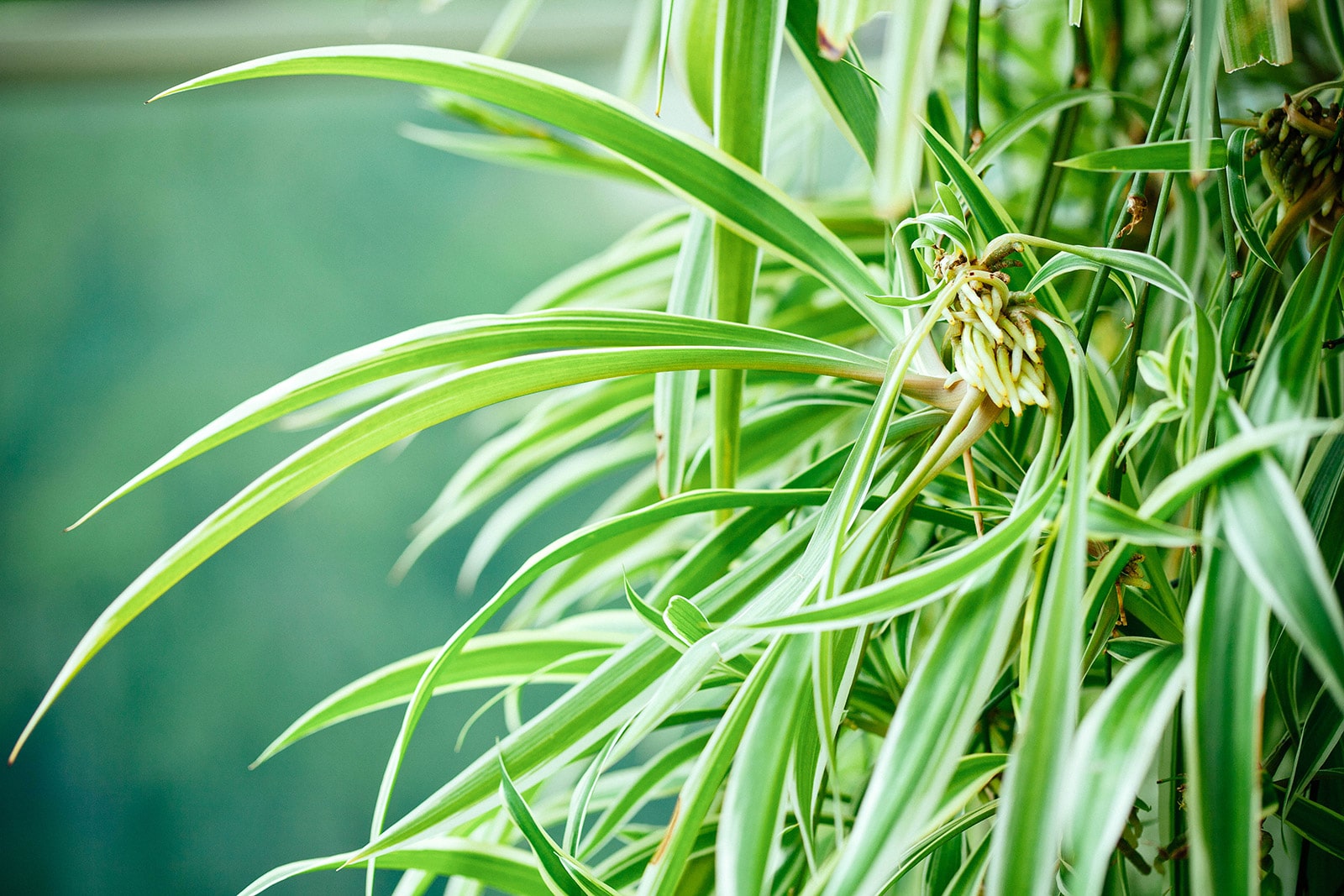
Propagating a spider plant
As described earlier, spider plants naturally grow plantlets (also known as “pups” or “spiderettes”) that dangle from the mother plant on thin stems, waiting to touch soil and turn into brand new plants. This makes it very easy to propagate the species, as all you have to do is give the plantlets what they want: soil.
If your spider plant has grown pups, you can pinch the stem to separate them from the mother plant. Then, you can root them in water or pop them directly in a planter with some spider plant soil. The success rate for this is very high, so it’s a great option to try if you’ve never propagated a plant before.
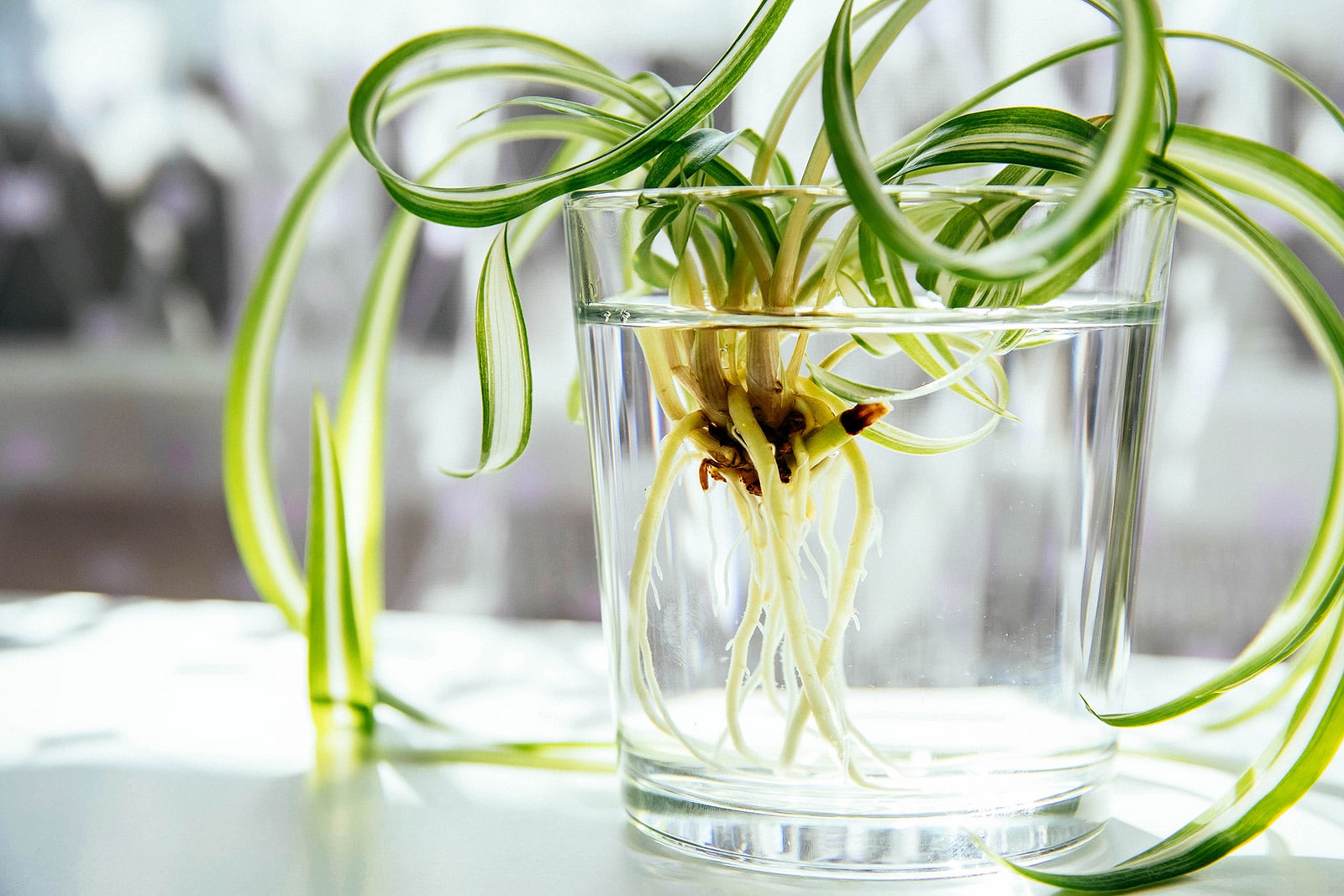
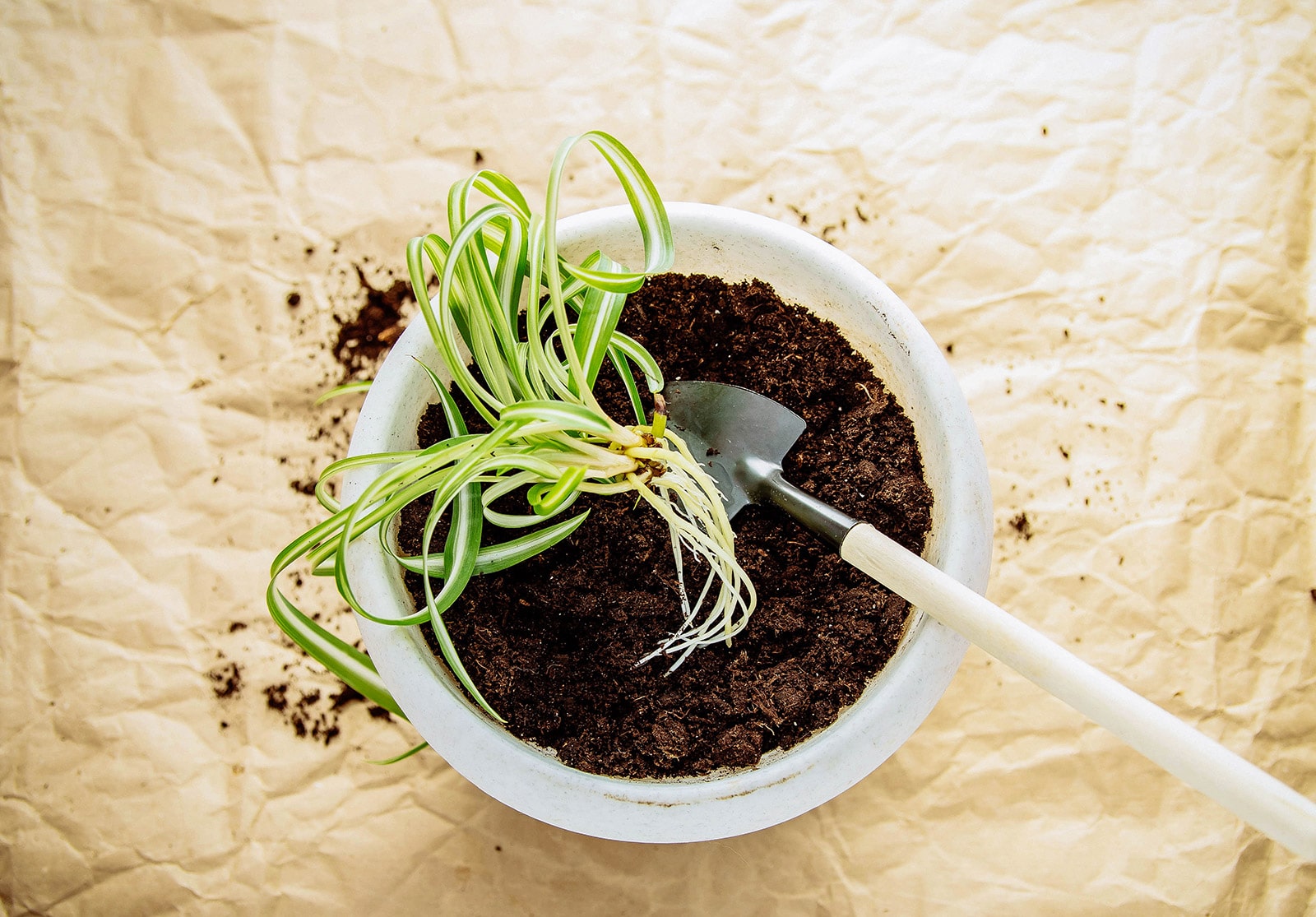
If your spider plant doesn’t have any pups but you’d like to multiply it, that’s still possible. As I mentioned, you can take them out of their containers and separate different clumps to pot up separately. If needed, you can cut through the roots using a sharp clean knife or scissors.
Frequently asked questions
Sources:
- Bolofo, R. N., & Johnson, C. T. (1988). The identification of ‘Isicakathi’ and its medicinal use in Transkei. Bothalia, 18(1), 125-130.
- https://wcsp.science.kew.org/namedetail.do?name_id=302261
- Poulsen, A. D., & Nordal, I. (2005). A phenetic analysis and revision of Guineo-Congolean rain forest taxa of Chlorophytum (Anthericaceae). Botanical Journal of the Linnean Society, 148(1), 1-20.
- Van Jaarsveld, E. (2012). Chlorophytum comosum (Thunb.) Jaques (Anthericaceae).
- Wolverton, B. C., Johnson, A., & Bounds, K. (1989). Interior landscape plants for indoor air pollution abatement.


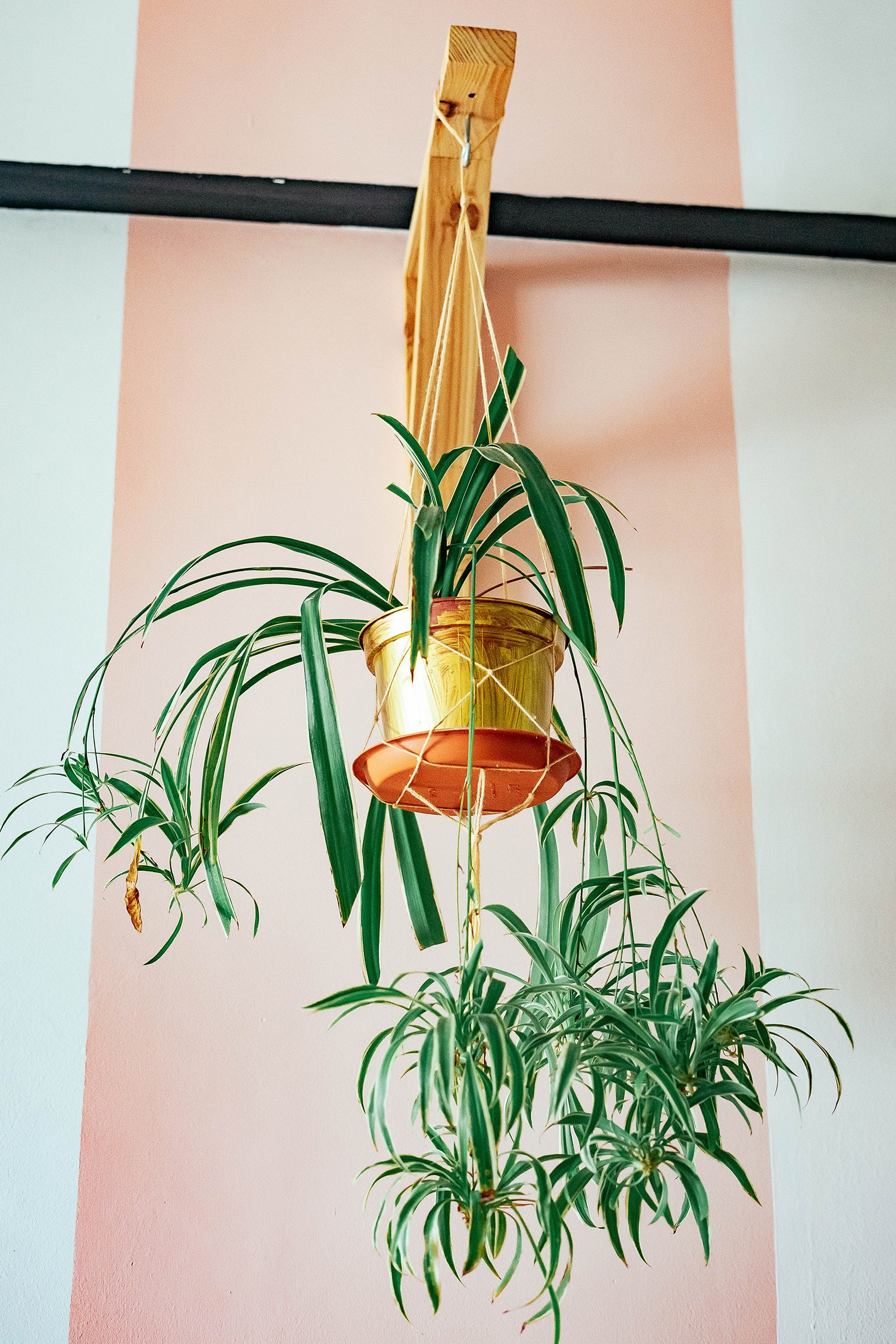













Why does my aged Spider plant look like it is growing up out of the soil? I recently re-potted it in the summer.
Wonderful informative article and loved your citations! <3
Thank you so much for such a lovely article with informative content. Hope to see more of a similar article.